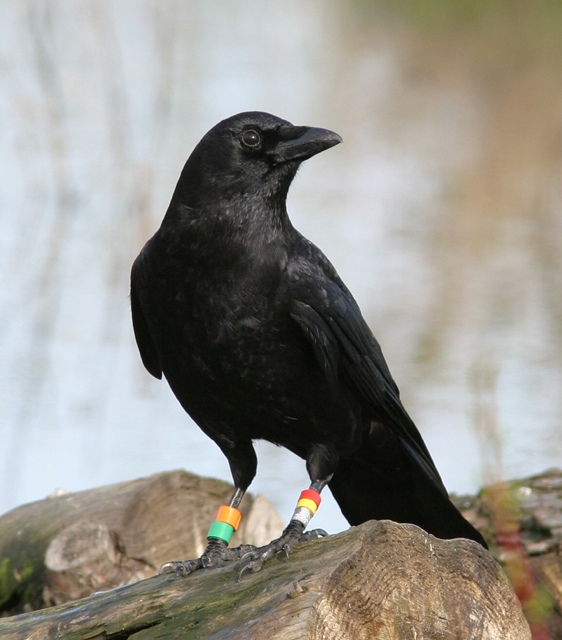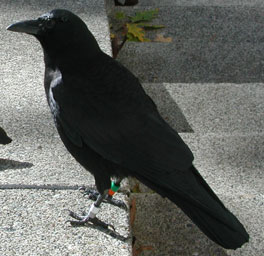Map Navigation
The map can be zoomed by clicking on the + or - on the left side of the map. In the upper left corner are four arrows which can be used to pan the map side to side and up and down, or you can drag the map around by clicking and holding the mouse button over the map and moving the cursor around. Double clicking on the map will center the map on that spot and may zoom in.
Submitting a sighting on the web site
Find the location where your crow sighting occurred, as close as you can to the actual spot--please zoom in as far as necessary. An icon will appear after a single click on the map to mark the location. To remove the marker, click on the body of the marker. If you do not know or cannot find the exact location of this crow sighting, please leave the map blank and enter any location information in the text field on the data reporting page.
Submitting a sighting on Twitter
You must have an account on Twitter. Include the tag #seattlecrows in your post and it will automatically be posted to the web site, within 15 minutes. All web site submissions will be cross-posted to the @seattlecrows account.
Submitting a sighting on Flickr
You must have an account on Flickr. Include the tag 'crow' on your crow image and be sure to geotag it with the location of the sighting. Only geotagged photos near Seattle, WA are currently shown on the map.
Banded Crow Observations
When making banded crow observations it is extremely important that you correctly identify the exact color combination of the crow's bands. We typically band our crows with two bands on each leg. One leg will have two plastic color bands and the other leg will have a plastic color band above a metal (looks gray or silver) U.S. Fish and Wildlife band. In 2003 we started banding crows with 2 colors ABOVE the metal band, like the crow pictured on the left.


Make sure you note which bands are on the bird's right leg, which bands are on the bird's left leg, and which colors are on top (closest to the bird's body). Remember, if the crow has its back to you, its right leg is on your right. The bird on the left has red over yellow over metal (USFWS band) on its left leg and orange over green on its right. The bird on the right has green over orange on its right leg and white over "gray" (actually a metal USFWS band with unique ID number) on its left leg. Note that gray plastic bands (GRAY) and the US Fish and Wildlife metal bands (METAL) have different entry codes, but may be difficult to distinguish in the field.

Please use the colors provided above when reporting your sighting. Some of the bands on the birds may have 2 white numbers or 2 white letters printed on them (e.g. 7 over 2). These markings are not as important for identification as the colors, but it is helpful if you can provide them. It is also helpful if you provide the activity of the bird at the time of your observation. I have provided six activities in the pulldown menu on the survey:
- Foraging: actively eating or scanning for food
- Perching: sitting on a limb or structure
- Preening: manipulating feathers on its body or that of another bird
- Defending Territory: chasing other birds out of the area and/or advertising territory by display and vocalization
- Being Dead: self-explanatory
- Other: please provide a brief description of the activity